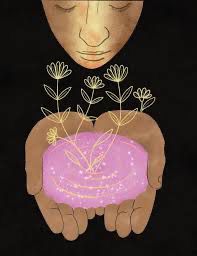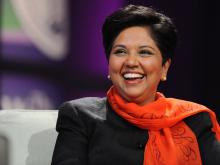What’s going on?
I have a new podcast, the Khanversation.
What’s going on?
I have a new podcast, the Khanversation.
Though Burmese are a good donor for the Tibeto-Burman in Burmese, it seems pretty clear now that I have Tibetan samples that the Bangladeshi samples are a bit more Tibetan-skewed than these Burmese samples. It may be that the early admixture into Bengal was from a Burmese population that had admixed less with the Austro-Asiatic substrate of Burma.
Note that this confirms the Austro-Asiatic populations have a totally different (more southern) East Asian ancestry source.
Major Amin sent over an extract from his writings about the 1947 attempt to grab Kashmir using tribal lashkars and why it failed. Obviously from a Pakistani POV, but an objective one.. There are formatting issues that I found hard to fix, but you will get the gist.
Continue reading Major Amin on the Failure of the Pakistani invasion in the First Kashmir War

Another Browncast is up. You can listen on Libsyn, Apple, Spotify (and a variety of other platforms). Probably the easiest way to keep up the podcast since we don’t have a regular schedule is to subscribe to one of the links above!
In this episode I talk to Hussein Ibish, a resident scholar at the Arab Gulf States Insititute in Washington DC and a longtime commentator on Palestinian affairs as well as the Arab world in general. He described how the crisis looks to a liberal Arab scholar who would prefer to see peace for both Palestinians and Israelis, and what we may expect in the future and ended with a rather pessimistic (or optimistic, depending on your point of view) vision of the near future. We hope to have him back soon to discuss what a saner outcome could look like and how that can be achieved (at least in theory; in practice we are probably in for prolonged violence). This is a complement to our earlier podcast with Dr Edward Luttwak, who presented a more optimistic vision of what Israel is trying to achieve and what it is likely to achieve.
Our friends at scribebuddy.com have prepared a transcript. I am posting it at the end below, unedited. But first, here is a chatgpt summary:
Blog Post: A Deep Dive into the Middle Eastern Crisis with Hossam Ibish on The Brown Pundits Browncast In a recent episode of The Brown Pundits Browncast, Dr. Ali hosts Hossam Ibish, a prominent commentator on Middle Eastern affairs, to discuss the current tumultuous situation in the Middle East, focusing on the complex dynamics between Israel, Iran, Hezbollah, and Hamas. Their conversation sheds light on a geopolitical crisis that has long roots in history and contemporary struggles for power, influence, and survival. The Prelude to a Wider Conflict Ibish sets the stage by explaining the origins of the current conflict, particularly after Hamas' attack on southern Israel on October 7. This event was intended to provoke a multi-front war, which Hamas hoped would involve Iran and its network of militias, notably Hezbollah, the Houthis, and pro-Iranian forces in Iraq and Syria. However, despite these hopes, Hamas is not fully trusted by these groups due to its Sunni identity, which clashes with the Shia alignment of Iran’s “Axis of Resistance.†Hamas' attack, while significant, has not succeeded in igniting the widespread regional war it had hoped for. Nasrallah, the leader of Hezbollah, notably went into hiding during the initial escalation, leaving Hamas without the robust military support it had counted on. The Strategic Calculus: Hezbollah, Iran, and Israel Ibish highlights how Hezbollah, despite its vast arsenal of missiles, has refrained from fully engaging Israel. The reason? Hezbollah's primary mission, as dictated by Iran, is not to fight for Hamas or Gaza, but to serve as a deterrent in the event of an Israeli attack on Iran's nuclear facilities. This strategic restraint is informed by Hezbollah’s role as a vital asset in Iran’s regional power structure. While Hezbollah attempted to support Hamas through limited military action on the border with Israel, the group has largely avoided provoking an all-out war. This approach preserves Hezbollah’s strength for its primary purpose—defending Iran—and avoids unnecessary depletion of resources in a battle it doesn’t see as its own. Israel, on the other hand, views Hezbollah’s arsenal and its proximity to its borders as a significant threat, which has led to the current Israeli invasion of Lebanon. Israel's Quest for a Recuperative Victory Ibish introduces the idea of Israel’s need for a "recuperative victory." Following the security failures of October 7, Israel seeks to restore its national security image and the confidence of its citizens. For Israel, a clear-cut victory against Hezbollah in Lebanon would serve two purposes: weakening Iran's regional influence by crippling Hezbollah and restoring the sense of security for Israelis in the north. However, Ibish warns that this may lead to only an "illusion of security." Even if Israel manages to weaken Hezbollah and push them back from the border, guerrilla warfare and insurgency tactics will likely persist. This scenario would mirror Israel’s ongoing insurgency struggles in Gaza, where an unending cycle of attacks and counterattacks creates a quagmire that may last decades. Hezbollah’s Calculus: Back to Guerrilla Warfare? One of the most compelling points in Ibish’s analysis is Hezbollah’s potential shift back to its guerrilla roots. The expansion of Hezbollah during the Syrian civil war, where it acted as the main ground force for Assad, has left the group vulnerable to Israeli intelligence and infiltration. A return to a more focused guerrilla war in southern Lebanon could help Hezbollah regain its earlier effectiveness as a lean, resilient fighting force, a possibility that Nasrallah seems to welcome. Iran's Role and the Prospect of a Larger War The conversation then shifts to Iran’s broader role in the conflict. Ibish points out that while Iran has supported Hezbollah and Hamas in the past, its current priority is regime survival and preventing any attack on its nuclear facilities. The Iranian leadership may be feeling domestic political pressure to act, especially as Israel has been striking at its proxies without significant retaliation from Tehran. Ibish predicts that a "war of the cities," reminiscent of the Iran-Iraq War, could be on the horizon. Israel could target Iran’s oil production facilities and nuclear infrastructure, which would be a significant blow to Iran's economy and national security. In response, Iran might hunker down and focus on developing a nuclear weapon as a long-term survival strategy, similar to North Korea's approach. The Grim Reality: Open-Ended Insurgencies As the discussion wraps up, Ibish emphasizes the grim reality that Israel now faces: open-ended insurgencies in the south (Gaza), the north (Lebanon), and possibly soon in the east (West Bank). This strategy of counterinsurgency warfare offers no clear path to resolution, and Israel’s attempts to secure its borders may only deepen the quagmire. Conclusion In this insightful conversation, Hossam Ibish paints a complex and often bleak picture of the Middle East’s current situation. The region’s entrenched conflicts, ideological divides, and strategic imperatives have created a powder keg where no side seems capable of securing a decisive victory. Whether it’s Israel’s quest for security, Hezbollah’s guerrilla warfare tactics, or Iran’s nuclear ambitions, the road ahead is fraught with uncertainty. As the crisis continues to unfold, the stakes for all parties involved remain perilously high. This episode of The Brown Pundits Browncast offers a sobering reminder of the intricate web of alliances and hostilities that define the modern Middle East, and the dangerous potential for further escalation in the coming months.
Continue reading Browncast: Hussein Ibish on the War in the Middle East
Another Browncast is up. You can listen on Libsyn, Apple, Spotify (and a variety of other platforms). Probably the easiest way to keep up the podcast since we don’t have a regular schedule is to subscribe to one of the links above!
In this episode Amey and I talk to famous (and famously pro-zionist) author and strategist Edward Luttwak to discuss the current crisis in the middle east and get the pro-Israel perspective (we also talked to Hussein Ibish to get the liberal Arab viewpoint). I also wanted to ask Dr Luttwak about some other topics (such as the travails of turbo capitalism and the nature and issues of US power etc) but the Iran and Israel clash took up most of our time. Amey did manage to ask Luttwak about the role of innovation in the IDF (a topic on which he has written a book too), but we will have to get him back someday to discuss other interesting topics. For now, here is Edward Luttwak on the Iran vs Israel war and its respective strategies and issues. Transcript below.

Our thanks to our friends at http://Scribebuddy.com (they provide a service that converts audio to text) who have provided the following transcript (not edited, so some errors will be there): Continue reading Browncast: Dr Edward Luttwak on Israel and the Grand Strategy of Iran
Vimal Yoganathan’s debut for Barnsley, highlighted by his two-goal performance, represents more than just a personal victory. His success shines a light on the severe underrepresentation of *South Asians* in English football, where they make up 7% of the UK population but only 0.3% of professional footballers.

There are two important nuances to consider regarding the South Asian population in football. Firstly, a significant portion of this population consists of adult immigrants, who typically do not enter professional sports due to their age upon arrival. Secondly, there has been some positive progress, with a 29% growth in the number of South Asian players in recent years, although this remains a small fraction relative to their overall representation in the UK.
For South Asian players, Yoganathan’s story is an outlier, illustrating the deeply embedded systemic and cultural barriers that continue to block progress in a sport dominated by white coaches and management.

Finally, there is a fourth garden, the Garden of the One.
A seeker went to that door and a voice asked, “Who is there?”
The seeker answered, “I am here, Beloved.”
The voice replied, “Then go away.”
The seeker went away, and continued his search and meditation for many years, until finally he returned and once again the voice met him with the same question as before.
This time, the seeker answered, “You are here.”
Then the seeker entered and there was no seeker and no sought, there was no lover or beloved, there was only the “One” forever and ever.

One of the commentators on this blog responded to my comment advocating for 55% female representation and leadership on the Waqf board controversy with the following:
“When you want to destroy a company from the top, you put women in the C-suite. The same logic applies here, it’s a sinister ploy.”
Presumably (and hopefully), this is simply bad banter—my British sensibilities are primed towards the funny kind. However, given the complex issues around patriarchy in Pakistan, as Omar’s recent post on blasphemy suggests, it’s important to examine this claim and set the record straight.
Rather than engaging in such cynical takes on women in leadership, let’s look at the tangible results produced by women who have ascended to leadership positions—specifically the career of Indra Nooyi, the former Indian (Tam-Bram from Chennai) CEO of PepsiCo, and how her achievements compare to those of her competitors.

Continue reading How Indra Nooyi’s successful leadership shatters patriarchal myths in Pakistan
This was on old post about blasphemy laws that I wrote in 2015 and revised in 2021. It is on the site, but hard to search for, so i decided to repost it now that blasphemy is again in the news with two recent episodes where the police were able to arrest the accused (ie save him from mob killing) but then the police themselves executed the blasphemer in custody. There has been an episode in the past where a Shia who had blasphemed against the sahaba (the companions of the prophet) was killed (with an axe) by a police officer while in custody and there have been a couple of episodes where blasphemers were killed by other prisoners, but this trend of execution by the police is now at a new level. The police officers who carried out the execution were garlanded and immediately received promises of millions of rupees in rewards (though with Pakistan reaching new levels of conmanship, it is likely that some of these pledges are fake). So now, not only will the mob kill you any time you are accused of blasphemy, if the mob fails, the police will finish the job the same day.
Of course, if it does reach trial, the courts will always sentence to death in any case because judges who let off previous accused have also been killed.
SO it goes.
Meanwhile, as liberal muslims and Liberals and Leftists in the West who want to use orthodox Muslims for their own purposes and want to find ways to oppose blasphemy laws without upsetting Muslims will dig up their usual “colonial era blasphemy laws in Pakistan” story to see if blame can be pinned on some dead entity, such as the British empire. So I wanted to have a post handy where I could direct them; so here it is, a quick overview of the blasphemy issue in Pakistan
A blasphemy law was part of the 19th century Indian Penal code as section 295.. It was not a bad law at all and the lazy habit of blaming it for later blasphemy law crap in the Indian subcontinent is just that: a lazy habit.
Here is section 295 of the Indian Penal Code of 1860:
Injuring or defiling place of worship with intent to insult the religion of any class.—Whoever destroys, damages or defiles any place of worship, or any object held sacred by any class of persons with the intention of thereby insulting the religion of any class of persons or with the knowledge that any class of persons is likely to consider such destruction, damage or defilement as an insult to their religion, shall be punishable with imprisonment of either description for a term which may extend to two years, or with fine, or with both.
The aim of the law was to prevent/punish things like someone throwing a dead pig into a mosque or a cow’s head into a temple. An actual physical desecration is to be punished. This seems like an eminently sensible law and cannot really be blamed for all the evils that came later. But in the 1920s there was a famous case in Lahore where a Hindu publisher was arrested by the colonial authorities after Muslims agitated against him for having published a book called Rangila Rasul (“merry prophet”). The British colonial authorities tried to prosecute him for hurting the religious sentiments of Muslims, but the high court in Lahore (quite properly) found him innocent because there was no law on the books against just publishing a book, no matter how offensive it may be to some religious group. Fearing future communal discord from such provocations, the British then had the legislative assembly add section 295A to the law in order to criminalize deliberate attempts to “outrage the religious feelings of any community”. This section states:
Whoever, with deliberate and malicious intention of outraging the religious feelings of any class of citizens of India, by words, either spoken or written, or by signs or by visible representations or otherwise], insults or attempts to insult the religion or the religious beliefs of that class, shall be punished with imprisonment of either description for a term which may extend to 4[three years], or with fine, or with both.
But even with this new and expanded article 295A in place, prosecutions for blasphemy were few and far between until, in the 1980s, General Zia added two new sections to the law in Pakistan and really set the ball rolling. These infamous sections are labelled 295B and 295C.
295-B: Defiling the copy of Holy Qur’an. Whoever wilfully defiles, damages or desecrates a copy of the Holy Qur’an or of an extract there from or uses it in any derogatory manner for any unlawful purpose shall be punishable with imprisonment for life.
295-C: use of derogatory remarks etc., in respect of the Holy Prophet: – who ever by words, either spoken or written, or by visible representation, or by any imputation innuendo, or insinuation, directly, defiles the sacred name of the Holy Prophet Muhammad (PBUH) shall be punished with death, or imprisonment for life and shall also be liable for fine.
Note that the law no longer requires that the offense be malicious in intent. Intent is no longer an issue. Insulting the Quran or the prophet, even unintentionally, is now punishable by death. To seal the deal, in 1991 the Federal Shariat Court of Pakistan struck down the option of life imprisonment and made the death penalty obligatory.
And of course, the new amendments only apply to blasphemy against Islam, not against all religions (in this sense, the new laws are more “rational” and internally coherent, since all religions blaspheme against all other religions as a matter of course, so the original law was not coherent in principle, though still workable in practice). Between 1984 to 2004, 5,000 cases of blasphemy were registered in Pakistan and 964 people were charged and accused of blasphemy; 479 Muslims, 340 Ahmadis, 119 Christians, 14 Hindus and 10 others. Thirty-two people charged with blasphemy were killed extra-judicially during that time. More have died since. Eighty-six percent of all the cases were reported in Punjab.
Every time the shit hits the fan, many liberal people start hoping that this blasphemy law can be changed to finally stop or slow down this torrent of prosecutions and killings. Others have noted that the law is not the problem, free-lance enforcement of a broader blasphemy meme in the Muslim community is the problem and will likely persist even if the law is repealed.
In my view the law is not the only problem, but it IS a very potent symbol of the surrender of state and society in front of the blasphemy meme. Repeal of the law will not kill that meme, but repeal of the law will be an equally powerful signal that things have changed and that state and society no longer approve of the killing of blasphemers. It will not end the problem, but it will be the beginning of the end. Repeal of the law is not a sufficient condition for this nightmare to end, but it is a very important necessary condition.
Unfortunately, I don’t think such repeal or amendment is actually likely in the foreseeable future. My predictions: Continue reading Blasphemy Laws and Blasphemy Killings in Pakistan